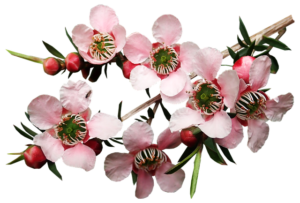
The Many Uses for Tea Tree Oil
What Tea Tree Oil is Good For? The oil is a natural remedy that has many benefits. It can be used to kill fungus and bacteria, including those that are resistant to some antibiotics. Additionally, it has anti-inflammatory, antiviral, and antifungal properties. It is also an antioxidant.
Tea tree oil is often used to treat acne, athlete’s foot fungus, eczema, and rosacea to name a few benefits.
However, it is important to note that tea tree oil should never be used full strength on your skin. It must be diluted with a carrier oil before use. Also avoid contact with your eyes, or are around your eye.
How to Use Tea Tree Oil
Tea tree oil is good for a variety of things. For example, you can add a few drops of tea tree oil to a diffuser and let it run for 30 minutes to help purify the air in your home.
You can also add tea tree oil to your shampoo or conditioner to help fight scalp conditions like dandruff.
To use tea tree oil as a spot treatment for acne, mix a few drops of tea tree oil with water in a small bowl and apply it to your face with a cotton ball. You can also add tea tree oil to lotion or coconut oil and apply it directly to your skin. However, it is important to note that tea tree oil should never be used full strength on your skin—it must be diluted before use.
TIP: If you don’t like the smell, (I don’t) just mix it with lavender oil.
What Tea Tree Oil is Good For
- Kills bacteria, fungus and viruses
- Can be used as a rub (diluted, of course) for coughs, colds, congestion
- Used as a household cleaner diluted in a vinegar-water solution it disinfects
Tea tree oil is a versatile natural remedy with many benefits. It can be used to kill bacteria and fungus. Additionally, tea tree oil has anti-inflammatory, antiviral, and antifungal properties.
What it is good for, among other uses, is to treat toenail fungus, skin conditions, dandruff, and lice.
Other uses include household cleaning. Add a few drops of the oil to a mixture of vinegar and water to kill bacteria, viruses, and fungi! It even kills black mold if you catch it at the start!
How It Works
The oil contains numerous chemicals known as terpenoids. Australian standards were established for the amount of one particular compound, terpinen-4-ol, which must make up at least 30% and preferably 40–50% of the oil for it to be medically useful. Another compound, cineole, should make up less than 15% and preferably 2.5% of the oil.
Studies
A single blind study has shown topical application of 5% tea tree oil in people with acne is as helpful as benzoylperoxide and has fewer side effects.
Another study found 100% tea tree oil applied topically was as effective as the antifungal medicine clotrimazole for people with athlete’s foot fungus affecting the toe nails.
Strengths of Tea Tree Oil
Oil at a strength of 70–100% should be applied moderately at least twice per day to the affected areas of skin or nail. For topical treatment of acne, the oil is used at a dilution of 5–15%. Concentrations as strong as 40% may be used—with extreme caution and qualified advice.
While this oil can be applied to minor cuts and scrapes, use caution for more extensive areas of broken skin or areas affected by rashes not due to fungus.
Tea Tree Oil: (Melaleuca alternifolia) Common names: Manuka, melaleuca.
Precautions and Side Effects
As with any natural remedy, there are some precautions you should take when using tea tree oil.
The oil may burn if it gets into the eyes, nose, mouth, or other tender areas. Some people have allergic reactions, including rashes and itching, when applying the oil. For this reason, only a small amount should be applied when first using it.
Tea tree oil should never be swallowed, as it may cause nerve damage and other problems.
- if you have sensitive skin, make sure you do a patch test before applying it to your entire face or body.
- avoid getting tea tree oil in your eyes or mouth. If you do get it in your eyes, rinse them out immediately with water.
- if you accidentally ingest tea tree oil, drink plenty of water and contact poison control if you start feeling sick.
Read More about Complementary and Alternative Medicine here >
The Tree
The tea tree grows in Australia and Asia. This tall evergreen tree has a white, spongy bark. The oil from the leaves is used. Australian Aboriginals used the leaves to treat cuts and skin infections. They would crush the leaves and apply them to the affected area. Captain James Cook and his crew named the tree “tea tree,” using its leaves as a substitute for tea as well as to flavor beer. Australian soldiers participating in World War I were given the oil as a disinfectant, leading to a high demand for its production.

